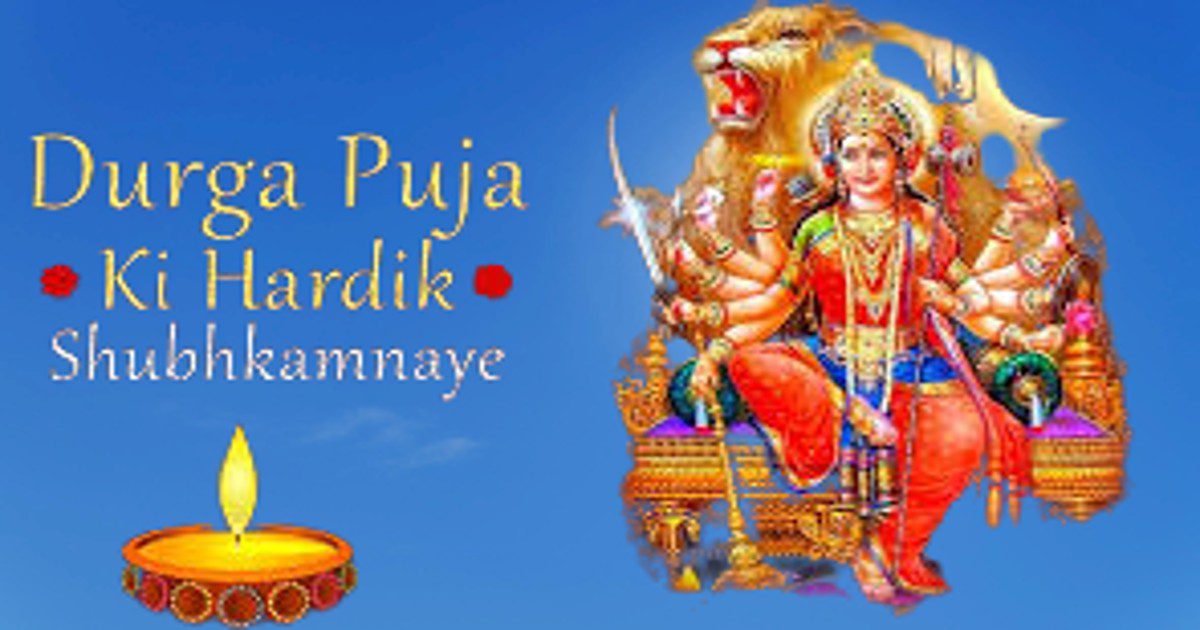Durga Puja: Durga Puja 2023 will be celebrated in the month of October with Mahalaya on 14 October and Maha Panchami on 19 October. Just like every year, with the resounding echoes of the melodious ‘Bajlo Tomar Alor Benu’, Bengalis around the world will welcome the Goddess with the biggest smiles. Being the most awaited festival of the year for Bengalis, Durga Puja is nothing short of a carnival, with breathtakingly beautiful pandals peppered across cities, the reverberating sound of the dhaak, clusters of brilliant white kaash phool, people adorned in vibrant attire, and a whole gastronomic celebration!

Durga Puja 2023
Every year, the Durga Puja festival starts on the 6th day of Sharada Navratri. This year, Durga Puja will be celebrated from Friday, October 20, 2023, till Tuesday, October 24, 2023.
Each year pandals are created where beautiful idols of Maa Durga killing Mahishasura is kept. Also seen with Maa Durga are Lakshmi, Ganesh, Kartikeya and Saraswati who are also worshipped. Durga Puja is the time when people get together, wear new clothes, and pray to Goddess Durga for her blessings. This is a festival of joy and happiness, and a reminder that no matter what happens good always wins over evil.
The 2023 Durga Puja shall be celebrated in the month of Karthik of the Bengali calendar, thus coinciding with the month of October in the Gregorian calendar. Here are complete Durga Puja 2023 dates are below:
| Durga Puja 2023 Dates | ||
| Mahalaya | Saturday | 14-Oct-23 |
| Maha Panchami | Thursday | 19-Oct-23 |
| Maha Sashti | Friday | 20-Oct-23 |
| Maha Saptami | Saturday | 21-Oct-23 |
| Maha Ashtami | Sunday | 22-Oct-23 |
| Maha Navami | Monday | 23-Oct-23 |
| Vijaya Dashami | Tuesday | 24-Oct-23 |
Durga Puja RITUALS
With energy buzzing in the air, the city of Kolkata lights up for the ten days of the Durga Puja. With the sound of dhak and shankh (conch shell) along with the smell of freshly cooked bhog in the air, every household celebrates each day with boundless energy. Each year, the arrival of the panchang(calendar with date and time for puja) brings home the blissful thought of the festival on its way.
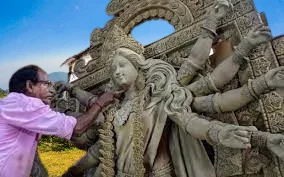
Mahalaya marks the end of the Pitru Paksha Shraddha (the 16-day period of paying homage to our ancestors) and the beginning of the auspicious Durga puja. This day is believed to be the beginning of Devi‘s journey towards her maternal home. In the morning one can hear the unified sound of Chandi path coming from the radios or televisions across the Bengali colonies.
The sixth day or Shashti marks the entry of Devi Maa into her abode. In all glory, Maa Durga leads a procession into her pandal along with God Ganesh, God Kartikey, Goddess Lakshmi and Goddess Saraswati. Decorated with glistening jewellery, bright saree and sindoor (vermillion), the Devi is accompanied by the dhak is (players of Dhak – a drum-like instrument played using two wooden sticks).
The sound of the dhak makes the heart race and adds a frenzy to the procession. In the evening, Bodon takes place. Bodon is the awakening of Goddess Durga for the seventh, eighth and ninth day of pujo. The unveiling of Devi‘s face takes place during Bodon along with a ceremonial puja.
The ceremonies of the seventh-day or Saptami start before dawn. The rituals for the day start with the pre-dawn bath of ‘Kola bau’ (Banana Bride) or ‘Nabapatrika snan’. Believed to be the wife of Ganesha, Kola Bau is also interpreted as a form of Goddess Durga herself. As Durga is known to be the Goddess of agriculture to many, Kola bau is represented by the nine natural plant forms of Goddess Durga.
When all of them are tied together, the Banana leaf looks the ghunghat (veil) of a newly married bride, hiding her face shyly. Kola bau is then bathed in the river as the priest’s chant mantras. A new saree is draped around her and she is placed on the right of Ganesh.
The Eighth-day – Ashtami or Maha Durgasthami is the day of colours, show and grandeur. Dressed in newly purchased kurtas and sarees accompanied by matching sets of jewellery, people head towards the pandal to perform the pujo rituals for the day. The crowd on the road gets thicker and thicker as the day moves towards the Sondhi aarti.
On this day, nine small pots with flags of different colours, each for the different shaktis(energies) are installed and the Nine shaktis are invoked and worshipped. In the Pandals, people move closer to the Durga idol to give anjoli. Here, flower petals along with bel paata (bel leaves) are distributed among the devotees, which they hold onto while reciting mantras with the priest. The flowers are then collected and offered at the feet of the Devi. The Anjoli is a part of the Saptami, Ashtami as well as the Navami rituals.
After this, the Kumari Puja takes place where young, unmarried girls, who have not yet reached puberty are worshipped as a form of the Devi. Depending on the age of the girls (from one to sixteen), they are worshipped in different forms of Durga. Flowers, sweets and Dakshina (gift) are presented as offerings to the young Kumari looking like a living Goddess.
A large crowd gathers for the Sandhi aarti at Maha Ashtami. The last 24 minutes of Ashtami and the first 24 minutes of Navami (ninth-day) is considered as Sondhi (Sandhiya) or a sacred cusp. In this Puja, the Devi is worshipped in her Chandiavatar. The Markandeya Purana, which is recited during the Puja, tells the story of how Durga during her battle with Mahishasura took the form of Chandi to kill the two Asuras – Chando and Mundo.
108 lamps are lit as customary practice in the Sondhi aarti while the dhaki play the dhak and people dance with joy to the sound of the aarti. In these moments you can feel yourself being soaked completely into the surroundings. People clap and dance as the tempo of the aarti and dhaki reach a crescendo. And then, as the Arti is completed the silence takes over. The puja ends with the distribution of bhog.
The ninth day – Navami proceeds with a series of pujas. Among the main rituals are Boli and Homa. Boli is the sacrificial tradition to appease the goddess. Now, it is mostly done with a pumpkin or sugarcane. Homa is a fire sacrifice which comes from the combination of Vedic as well as tantric traditions. The day ends with the aarti along with the dhunuchi-nach (a Bengali incense burner used for the ritualised worship dance).
The tenth day – Dashami is known as the Bijaya Dashami (Victory on the tenth day). On this day, the Devi begins her journey back home. One of the most interesting parts of the day lies in the Sindoor khela. Here, married women offer baran (farewell) in the form of betel leaf, sweets and vermillion to the Devi. After this, the ladies apply sindoor in the parting of each other’s hair and smear the rest of it on each other’s faces.
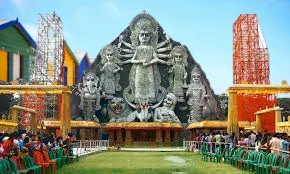
As sindoor is a mark of a married woman, this ritual is believed to be a prayer to the Devi for the health and peace of their families as well as spouses. Dressed in laal-paar-saada-sarees (white saree with crimson border) and covered in red vermillion, the joy is evident from the faces of the women.
Dussehra
Vijaya dashami also known as Dussehra, Dasara or Dashain, is a major Hindu festival celebrated every year at the end of Navaratri. It is observed on the tenth day of the month of Ashvin, the seventh in the Hindu Luni-Solar Calendar. The festival which typically falls in the Gregorian calendar months of September and October.
Vijayadashami is observed for different reasons and celebrated differently in various parts of the Indian subcontinent. In the southern, eastern, northeastern, and some northern states of India, Vijayadashami marks the end of Durga Puja, remembering goddess Durga’s victory against the buffalo demon Mahishasura to restore and protect dharma.
In the northern, central and western states, it marks the end of Ramlila and commemorates god Rama’s victory over the demon king Ravana. Alternatively, it marks a reverence for one of the aspects of goddess Devi, such as Durga or Saraswati.
Followed by the Sindoor khela, Bisorjon(immersion) of the idol of the Devi is the concluding ceremony to the Durga puja. For some, it is an emotional moment to see Maa leaving. The idol of Maa Durga as well as the Nabapatrikaare immersed in the river surrounded by the huge crowds of devotees that have come to see them off.
The water (Shanti Jal) collected from the immersion spot is sprinkled on the devotees embracing the calm left behind by Maa. Teary-eyed, people return home with the Devi housed in their hearts.
Sharada Navaratri is the most celebrated of the four Navaratri, named after Sharada which means autumn. It commences on the first day (pratipada) of the bright fortnight of the lunar month of Ashvini. The festival is celebrated for nine nights once every year during this month, which typically falls in the Gregorian months of September and October.
The exact dates of the festival are determined according to the Hindu lunisolar calendar, and sometimes the festival may be held for a day more or a day less depending on the adjustments for sun and moon movements and the leap year. In many regions, the festival falls after the autumn harvest, and in others, during harvest.
The festivities extend beyond goddess Durga and various other goddesses such as Saraswati and Lakshmi. Deities such as Ganesha, Kartikeya, Shiva, and Parvati are regionally revered. For example, a notable pan-Hindu tradition during Navaratri is the adoration of Saraswati, the Hindu goddess of knowledge, learning, music, and arts, through Ayudha Puja. On this day, which typically falls on the ninth day of Navaratri, peace and knowledge is celebrated.
Warriors thank, decorate, and worship their weapons, offering prayers to Saraswati. Musicians upkeep, play, and pray their musical instruments. Farmers, carpenters, smiths, pottery makers, shopkeepers, and all sorts of tradespeople similarly decorate and worship their equipment, machinery, and tools of trade. Students visit their teachers, express respect, and seek their blessings. This tradition is particularly strong in South India, but is observed elsewhere too.
The complete detail of the puja that will be held in these 9 days of Navratri is given below:
| Sharada Navratri 2023 Tithi | ||
| Navratri Day 1 | Maa Shailputri Puja | Sunday, October 15 |
| Navratri Day 2 | Maa Brahmacharini Puja | Monday, October 16 |
| Navratri Day 3 | Maa Chandraghanta Puja | Tuesday, October 17 |
| Navratri Day 4 | Maa Kushmanda Puja | Wednesday, October 18 |
| Navratri Day 5 | Maa Skandamata Puja | Thursday, October 19 |
| Navratri Day 6 | Maa Katyayani Puja ( Maha Sashti ) | Friday, October 20 |
| Navratri Day 7 | Maa Kalaratri Puja ( Maha Saptami ) | Saturday, October 21 |
| Navratri Day 8 | Maa Maha Gauri Puja ( Maha Ashtami ) | Sunday, October 22 |
| Navratri Day 9 | Maa Siddhidatri Puja ( Maha Navami ) | Monday, October 23 |
| Navratri Day 10 | Vijayadashami or Maha Dashmi | Tuesday, October 24 |
Durga Puja History – According to Mythology
According to Hindu mythology, the demon king Mahishasura got a boon from Lord Brahma that no man or God could kill him, however, a woman could kill him. Blessed with this boon, Mahishasura defeated the Gods and chased them out of heaven. To end the terror, all the gods including Lord Brahma, Vishnu and Shiva, created Maa Durga.
The fierce fight between Maa Durga and Mahishasura lasted for ten days and on the tenth day Maa Durga killed Mahishasura. The day is celebrated as Vijaya Dashami, symbolising the victory of good over evil.
Durga Puja or Durga Pujo is celebrated with unmatched enthusiasm in West Bengal. Other states of the Indian subcontinent which welcome Durga Puja with pomp and pomposity are Assam, Odisha, Bihar, and Tripura. The Indian diaspora of other countries, such as Bangladesh, Nepal, Germany, Hong Kong, the United States of America, Switzerland, Sweden, and the Netherlands, also come together to unite in their respective foreign lands and celebrate Durga Puja.
Birth of Devi Durga
The legends speak of Goddess Durga as a creation of the three most powerful Devas (Gods) in the Hindu Pantheon – Brahma (the creator), Vishnu (the preserver) and Shiva (the destroyer). The story of Durga’s birth is narrated in the Devi Bhagvatam. According to this sacred text, once a son called Mahishasura was born to an Asura (demon). Born as an Asura, he saw the victory of Devas over Asuras in every fight.
Annoyed by the constant defeat of the Asuras, Mahishasura decided to perform a tapasaya (a long penance) to please the Devas. Years went by.Impressed by Mahishasura’s dedication, Lord Brahma decided to grant him a boon. Elated at such an opportunity, Mahishasura asked Brahma to bless him such that neither a man nor a God could kill him. Thus, his death would lie only in the hands of a woman – which in his mind was impossible.
Taking advantage of the boon, Mahishasura, along with his troop of Asuras, invaded the Earth. He looted and killed with impunity. Soon, raging with power, he decided to take over heaven believing he could be the ruler of all the three realms. The battle between the Asuras and the Devas was ferocious. Mashishasura finally defeated the army of Indra in Amravati. Humiliated, the Devas met with the Tridevas, hoping to find a solution.
Frustrated and angry at the defeat of the Devas, the Tridevas started to think. “Only a woman can kill Mahishasura” said Lord Brahma, thinking about the boon he had given the Asura. But which woman in the three realms was strong enough to take on the battle? The Tridevas put their minds together and using their powers created energy that took the form of Devi Durga. Each of the Devas gave their weapon to the Devi to help her kill Mahishasura. Himavat, the God of Himalaya, gave the Devi a Lion to mount on.
Initially, when Durga approached Amravati, Mahishasura laughed at the thought of fighting a woman. But as the war raged, Mahishasura realised that he was no match for the supreme powers embodied within the Devi. In the ten days of battle, the Asura kept changing forms to confuse her, but the Devi never missed her aim.
As soon as the Asura changed to his original form, a buffalo, Durga swiftly beheaded him, thus freeing heaven and earth of the tyrant. Hence, Durga came to be known as Mahishasura Mardini (The Killer of Mahishasura). This last scene is replicated in many of the idols of the Devi worshipped in the Durga puja. In some idols the stance of Maa Durga while killing the Asura is similar to that of Shiva during Tandava.
Devi Durga Idols
Kumartuli is a neighbourhood in North Kolkata which has a legacy of idol making. Situated on the banks of the Hooghly river, the settlement of Kumartuli dates back to the 17th century. A few potters moved here to eke out a livelihood for themselves after the British East India company acquired the land where they used to stay.
Slowly, from making clay vessels like other potters, the people who settled here graduated into idol making; and since then, generation after generation, the Kumars (potters) have been moulding the idol of Maa for the puja. Walking through the lanes of Kumartuli, you can almost feel the gaze of the idols lining both sides!
The process of making idols for Durga puja is like a well-rehearsed orchestra where the kumars(potters) are the key performers.There are various steps in the including material collection, moulding, painting and decorating.
The collection of the materials is the first step to the long days that go into moulding them into the idol of the Devi.
The main components used for making the Durga idol include bamboo, straws, husk and Puniya mati. The Puniya Mati is a mix of mud from the banks of the holy river Ganga, cow dung, cow urine and mud from the brothel, also called ‘Nishiddho pallis’ or forbidden territories. This age-old ritual of using mud from the brothels has many interpretations. It is said that when a man enters the forbidden territories to sin, he leaves his virtues at the doorstep.
Thus, this mud is said to be pure and virtuous. Another perspective, based on the Vedas, is that women fall under nine classes known as the Navkanyas, who are to be worshipped along with Maa Durga during the Durga Puja. The Nati (dancer) as well as the Vaishya (prostitute) are among the Navkanyas. Thus, the use of the soil from their doorsteps is a sign of respect given to them during the Puja. Whatever the reasons might be, the centuries old ritual is still followed without any questioning.
The idol making begins with the use of bamboo sticks to give a definite shape to the idol.
Next, straws and husk are stuffed around the bamboo sticks to give a basic shape to the formation of the body.
Next up is the claying of the idol which finally defines the physical form of the Adi Parashakti.
Clay mixed with husk is layered one over the other to give it a smooth and strong form.
The face of Maa Durga is the most intricate part of the idol. Thus, the head is moulded separately and fixed on the torso in line with the overall vision of the artisan.
After the idol is dried in the sun, it is painted in the brightest of colours!
On the day of Mahalaya – the day the Devi is invited to descend to earth – the artisans paint the eyes on the idol of Durga. This final touch is given to the Devi in the form of a ritual known as ChoukhuDaan.
The final step before the Devi proceeds towards the pandals is to dress up Maa in a gorgeous saree and intricate jewellery and garlands. The pieces of jewellery and garlands are made using materials like paper, glitter, bead and bright threads. Sometimes the pieces ofjewellery are made in clay itself while moulding the idol. These are then painted and decorated.
When Durga comes home, she doesn’t come alone. Durga is believed to come along with her four children in tow – Ganesh, Kartikey, Lakshmi and Saraswati, who are placed around her. While some believe in this, others have reasons to disagree. Some researchers on Indian culture argue that the idols next to her are not her children but her attributes that are given a physical form.
Nonetheless, the idols of these four gods and goddesses are also created in a similar manner to that of Durga and placed by her sides. Another important idol is that of the Asura, Mahishasura, with a frightened expression as the Devi fiercely gazes down at him while her weapons rest in her hands.
Commonly Maa Durga is seen with ten hands, but Mahalakshmi (a form of Durga) is also believed to have eighteen hands according to the DeviBhagvatam Purana. Each hand of Maa Durga holds the objects given to her by the Devas during her creation. All of these objects are worshipped during the aarti that takes place in the pujo.
The pandals are constructed with huge bamboo poles tied together and then draped over with cloth. At one end of the pandal is the stage where Maa Durga along with the other idols is placed while the rest of the space is filled by her devotees.
Durga Puja
Durga Puja, major festival of Hinduism, traditionally held for 10 days in the month of Ashvina (September–October), the seventh month of the Hindu calendar, and particularly celebrated in Bengal, Assam, and other eastern Indian states. Durga Puja celebrates the victory of the goddess Durga over the demon king Mahishasura. It begins on the same day as Navratri, a nine-night festival in many northern and western states that more broadly celebrates the divine feminine (shakti).
The first day of Durga puja is Mahalaya, which heralds the advent of the goddess. Celebrations and worship begin on Sasthi, the sixth day. During the following three days, the goddess is worshipped in her various forms as Durga, Lakshmi, and Sarasvati. The celebrations end with Vijayadashami (“Tenth Day of Victory” ), when, amid loud chants and drumbeats, sacred images are carried in huge processions to local rivers, where they are immersed.
That custom is symbolic of the departure of the deity to her home and to her husband, Shiva, in the Himalayas. Images of the goddess—astride a lion, attacking the demon king Mahishasura—are placed at various pandals (elaborately decorated bamboo structures and galleries) and temples.
Located in eastern India along the Hoogly river, Kolkata (formerly known as Calcutta) is often referred to as the cultural capital of India. With the grand colonial architecture, rich traditions, beautiful music and art, this city has a unique character. As a home to esteemed artists like Rabindranath Tagore and Satyajit Ray, among others, the people of this city have a special appreciation for literature as well as cinema.The city also provides an unparalleled religious and cultural experience of Durga puja each year.
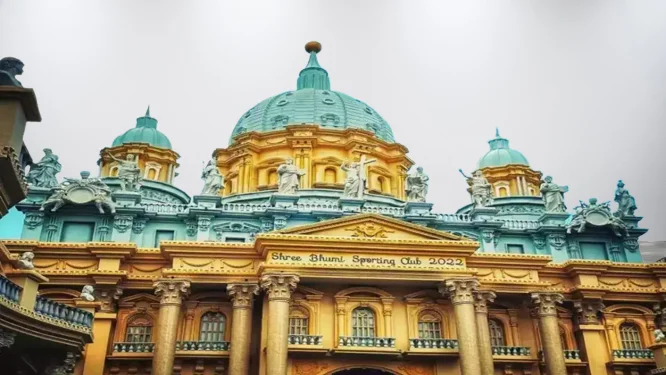
“Dugga Dugga “echo the united voices of all the ladies in the household as they move towards the pandals for Durga puja, wishing for a safe journey ahead in life. The sound of intense beats coming from the dhak mixed with the aroma of the dhunuchi lit in every house, park or corner fills the streets of Kolkata. Clad in the most beautiful attires, adorning the heaviest of jewels and thickest of bangles with sindoor and bindis on their temple, the women seem to walk a step ahead of the men today.
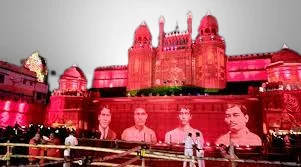
After all, Durga puja is the day of the Devi. Nothing but colour and festivity flow through the lanes in the nine days that Maa Durga stays in her basha (house) with her four children, only to be united with her husband Shiva on the tenth day, (also known as Vijayadashami). But does it really end there? The massive grandeur and style of Durga puja is not restricted to being just a nine-day festival.
Durga Puja houses itself in the hearts of the devotees who utter “Maa Dugga” at the smallest of hiccups in life. The resounding ullu (a high-pitched ululation sound created by striking both cheeks with the tongue believed to be very auspicious and said to ward off any evil) echoes in the streets of the city long after the Durga puja is all wrapped up.
Durga Puja in Kolkata, India has been inscribed on the Intangible cultural heritage list of UNESCO in December of 2021.
Follow, like, share read4knowledge for more interesting articles.
